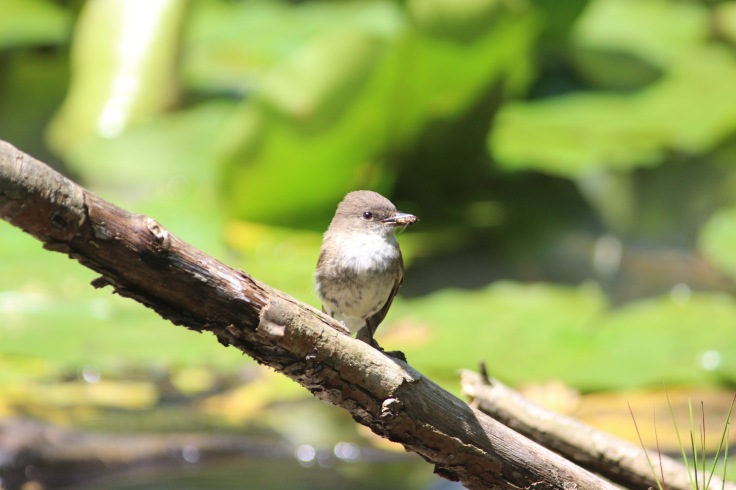Hey guys, welcome back! Today is the Eastern Phoebe, one of the earliest arrivals during spring migration, at least in the east. Eastern Phoebes are members of the flycatcher family, and are one of 3 phoebe species in the U.S. (the others being Say’s Phoebe and Black Phoebe, both found out west.) Flycatchers in general are difficult birds to ID, as most of them are a dull grey or olive in color, and the Eastern Phoebe is no exception! They’re small flycatchers that are grey with a buffy, sometimes yellowish belly. They do lack the wingbars sported by other flycatchers of the same size, which can help solidify your ID.

Shortly after I started my lifelist, I was doing some early spring birding on Randall’s Island. I reached an open area near the pedestrian footbridge to Manhattan and saw a bunch of little grey birds. I knew they were flycatchers right away. They had the right shape, and were perched conspicuously flying out, grabbing some insects, and returning to the same perch. I wasn’t great at flycatcher ID yet, and I thought they were either Eastern Phoebes or Eastern Kingbirds (I’d learn that the Eastern Kingbird’s coloration is quite different.) I pulled out my phone and opened up the Merlin app. I checked a few of the flycatchers, and when I got to the Phoebe, it said “watch for it constantly dipping its tail down.” Sure enough, the birds I were seeing were wagging their tails. A great example of a bird’s behavior being a great way to ID them, and I’ve never forgotten it since.

The arrival of the Eastern Phoebe is one that millions of birders in the Eastern U.S. wait for. They are traditionally one of, if not the first, spring migrant, and their arrival signals one of the greatest periods in nature; spring migration. For roughly two months every spring, our parks and backyards are filled with dozens of species that stick around only for a couple weeks before moving on. It’s hard to convey the excitement of migration to friends that aren’t birders, but it all (usually) starts with the Eastern Phoebe! The Eastern Phoebe starts showing up around the last week of March, but it’s May that is peak migration, and today is May 3rd. So if you’ll excuse me, I’m gonna grab my binoculars and camera and go enjoy migration. I hope some of you do as well! Check back next time when we’ll talk about the Northern Mockingbird! See you all then!

Reblogged this on Wolf's Birding and Bonsai Blog.
LikeLike